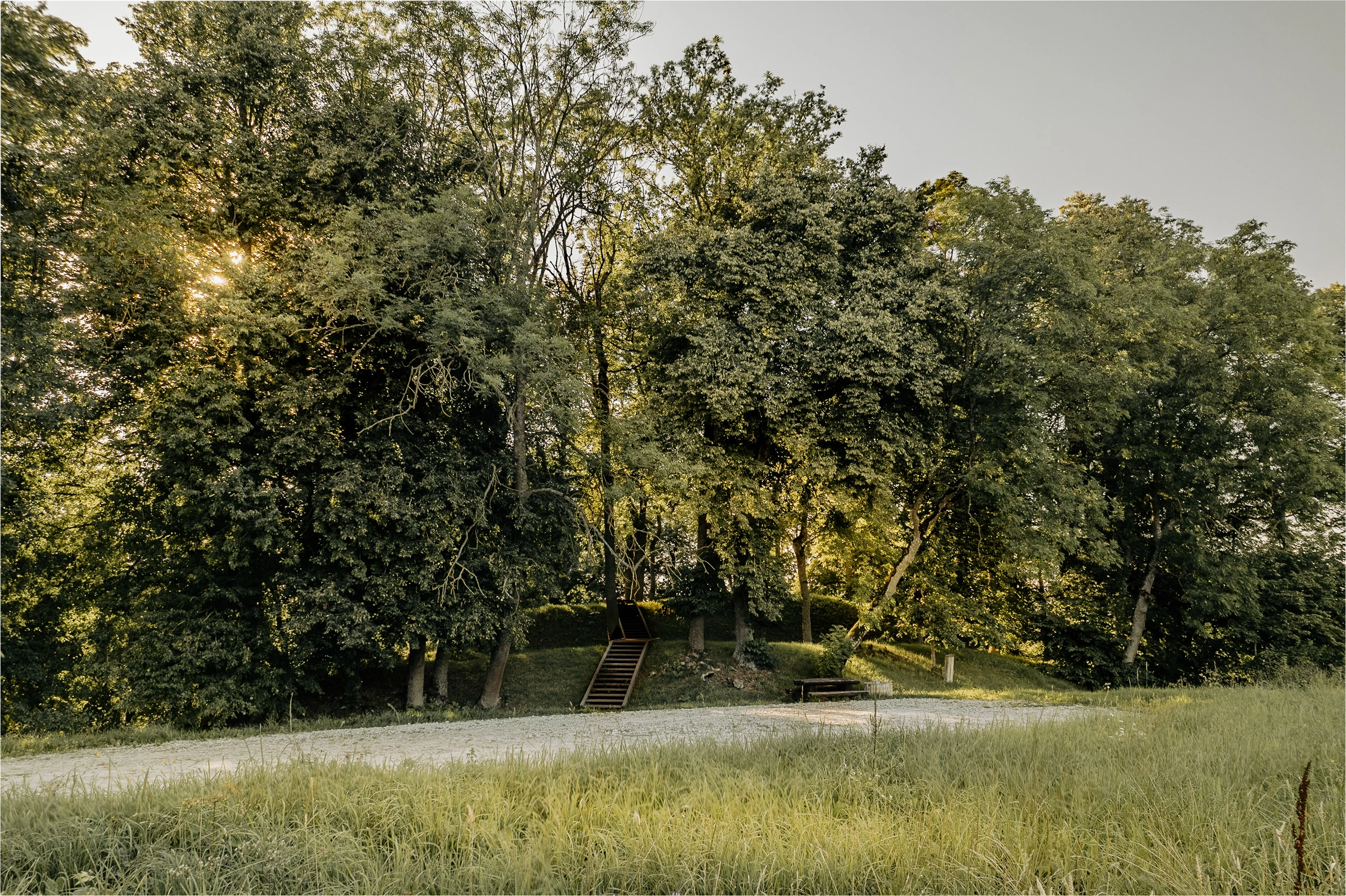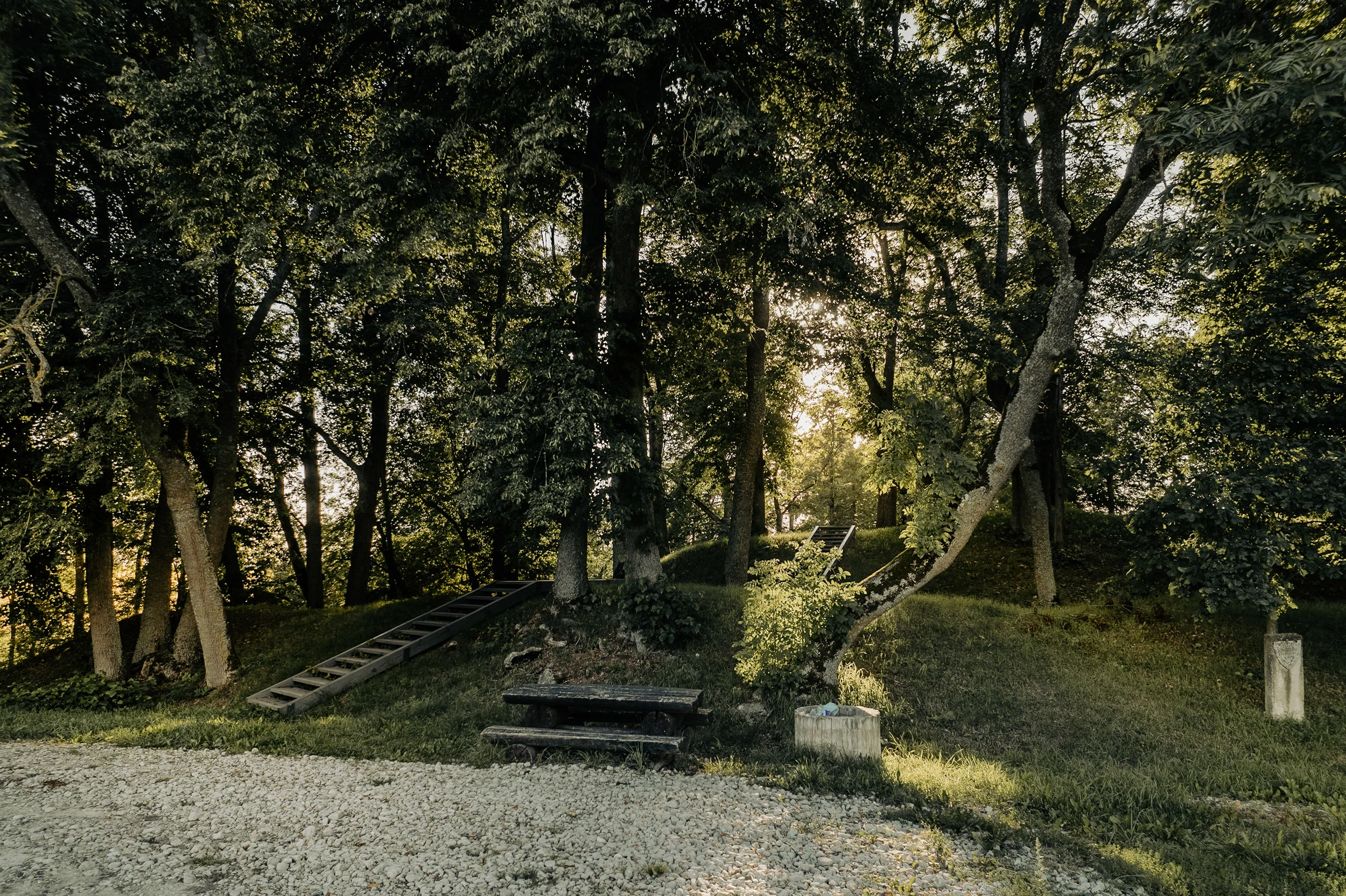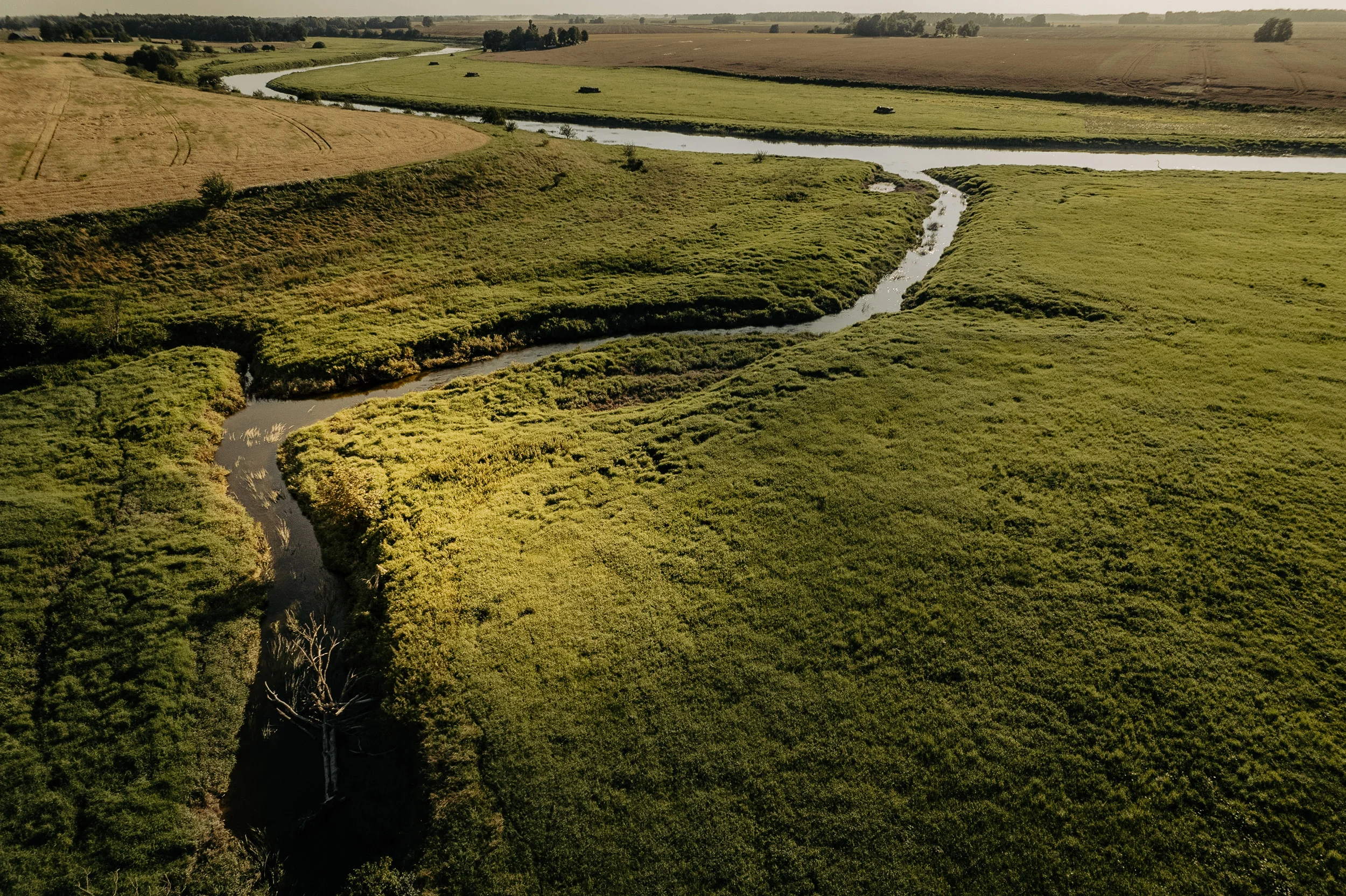Ąžuolpamūšė Mound
- Home
- Ąžuolpamūšė Mound
The mound is located at the confluence of two rivers. It is surrounded by the Tatula River to the north and the Ūgė River to the south and south-west. The mound is triangular, about 60 m long, and surrounded by the remains of defensive ramparts. The side slopes are about 9 m high, almost perpendicular, eroded by the river courses. The mound was built and inhabited in the 9th and 11th centuries. The wooden castle of the Semigallians that stood here was part of the defensive system of Northern Lithuania. Archaeological research has shown that the buildings had stone ovens, sandy floors, and the courtyard was paved with stones. The 13th century sources do not mention the Oak Mound, but it was still inhabited by people, as there is a cemetery nearby. It was not until the end of the 13th century, when the German Order conquered Zemgale, that the last inhabitants abandoned the area and life in Ąžuolpamūšė ceased.
"Ąžuolpamūšė Mound" – is a corner of rare natural beauty 1,2 km north-west of the Pasvalys-Biržai and Via Baltica at the intersection, drowning in a haze of oak, lime and ash trees. The fertile meadows of the Tatula valley merge with the arc of the Musa, and the fields of the villages run down the hills. Nowhere can you find such beautiful highlands as here, such high, craggy banks as those washed away by the tiny river Ūgė. Viktoras Bergas, a nature conservationist who has visited the area, deservedly called this corner of the district the "Switzerland of Northern Lithuania". (A. Stapulionis. „Pasvalio rajono piliakalniai“. – Darbas, 1977, Nr. 89, p. 3, 4).
Thanks to its exceptional beauty and naturalness, Ąžuolpamūšė Mound is considered by many to be a place of fun and leisure. From early spring to late autumn, if it is not too cold, even in winter, people visit the castle. As soon as the snow melts on the slopes, children come to look for the first fireflies, and in the summer they go on hiking trips. There is a beautiful tradition of placing bird nesting boxes here on Earth Day. In summer, the mound is full of young people, and you will meet many families who come to rest or celebrate a holiday, enjoy nature, have fun, and taste a steak smelling of the smoke from the campfire. For those who like to take pictures, there are wonderful views, and newlyweds come here to capture the most beautiful moments of their lives.
The castle mound was the subject of interest and is mentioned in old documents; one of them says: "In pagan times there was a defensive castle here, the remnants of which can still be seen on the high hill behind the town of Pasvalis, at the confluence of the Tatula River and the Mūša River" (VUB, Fondas A-3862. Lietuvos ir Ukrainos provincijos pranciškonų vienuolynų inventoriai už 1664-1681 metus. Dokumentas Nr. 36467).
Archaeologist Gintautas Zabiela says that the history of the Ąžuolpamūšė Mound dates back to the 11th and 12th, and maybe even 13th century. This means that we are touching nine hundred or even a thousand years of antiquity. The findings of the Oak Mound have been studied in Vilnius, and all of them are currently on display in the Pasvalys Regional Museum.
In 1983, an ensemble of sculptures ("The Sower", "The Sower", "The Dancers", "The Elves", etc.) was established at the mound by the folk craftsmen, who had gathered here for a creative camp.
On July 6, 2009, in celebration of the Millennium of Lithuania and the "Millennium Odyssey" inviting Lithuanians from all over the world to sing the "National Anthem", people from all over Pasvalys district gathered at the Ąžuolpamūšė mound. Optimistic, forgetting their work and worries, everyone enjoyed the celebration, listened to songs and poems. After the singing of the "National Hymn", three cannon shots rang out: for the Millennium of Lithuania, for Lithuania, for Pasvalys district and its inhabitants. This has become a beautiful and meaningful tradition, celebrated every year.
Legends: One legend says that there used to be a mansion on the mound, which burned down. On the first day of Easter, the lord who lived there drove his serfs to plough the land. When they returned from their work, they did not find the manor. Now, every night, two girls come out and go down the stairs to the water and wash handkerchiefs and plates. When the roosters crow, they disappear immediately. Walking up the hill, people stumble uneasily when they hear roosters crowing, scythes beating, bells ringing underground.
Another legend says that once, near the mound, men were grazing horses at night and sitting around a fire. Suddenly, a handsome pony with a wand came down from the hill, said hello and sat down to warm himself. A man offered him some snuff. The gentleman took it, but sniffed through his mouth instead of his nose. Then the men saw that his nose had no nostrils. When the roosters crowed, the pony got up and went back up the hill. Soon there was a bang, and the men were suddenly drenched with water. Thus the mound defended itself against destroyers and kept its secrets by various intimidations.
Social:
Draugystės g. 2, Raubonių k., Pasvalio r.
Draugystės g. 2, Raubonių k., Pasvalio r.
Information
Useful links










